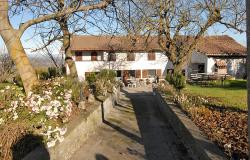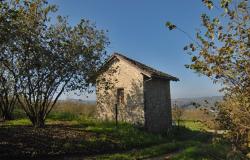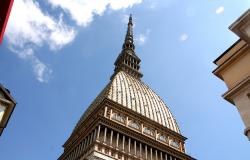A noble villa
Stresa, was a small fishing village in the 19th century until it became an internationally famous magnet for tourists, drawn there because of its spectacular landscape and mild climate. It was fashionable for the nobility and royalty of the time to have a summer residence built along the shore line of the lake and that is how Villa Pallavicino came into existence, constructed in 1855 by Neapolitan Ruggero Borghi.
It was enlarged by the next owner, the Duke of Vallombrosa, who was responsible for planting groups of trees such as Lyriodendron tulypifera, (the name comes from the tulip-like flowers), at that time almost unknown in Italy. But it was the Pallavicino family who modernised the park in 1862, influenced by the fashion of the period for English gardens.
The family also had the inspiration to turn the 15-hectare park into a zoological garden at the wish of the present owner’s grandmother, where 150 species of animals and birds from all over the world share their habitat with plants from their country of origin. The plants chosen had to be suitable for long, dry summers and wet winters, along with the acidic soil of the lake.
Perfect climate
 The villa is situated on a coastal road on the outskirts of Stresa in the region of Piedmont, the northern-most area of Italy, lying between the Alps and the flat Po plain. Winters are severe on the higher slopes, but down in the valley around Lago Maggiore there is a micro-climate which makes it ideal for growing many tropical plants all year round.
The villa is situated on a coastal road on the outskirts of Stresa in the region of Piedmont, the northern-most area of Italy, lying between the Alps and the flat Po plain. Winters are severe on the higher slopes, but down in the valley around Lago Maggiore there is a micro-climate which makes it ideal for growing many tropical plants all year round.
The terrain of the park descends towards the lake and enjoys spectacular views all over the azure blue shoreline and the mountains beyond. The villa itself has the best view, being located right in the centre of the park.
Rising up from the road is a winding path or steps leading to a very informal park with a network of connecting pathways giving access to different areas including an English garden, an Italian garden and an arboretum. Animals and birds roam freely around the gardens.
Plants from around the world
 The approach to the park is a line of cypresses, curved to form a row of arches and giving the impression of a cloister opening out onto the water.
The approach to the park is a line of cypresses, curved to form a row of arches and giving the impression of a cloister opening out onto the water.
This leads up to a dense copse of rhododendron and azaleas from the Himalayas, and a little further on camellias from China. Standing in the English garden in front of the villa is a huge cedar of Lebanon, used since ancient times for the extraction of the essential oils that are found in its wood and which keep insects at bay.
Along the drive are fine examples of the scented Magnolia grandiflora from the eastern region of the United States and the Gulf of Mexico, first introduced into Europe in the 18th century, with their large, leathery, evergreen leaves and double, cream-coloured perfumed flowers.
Close to the Lombardina are plane trees, which have wonderful chequered peeling bark, ash and beech. Other arboreal specimens include Ginko biloba (the maidenhair tree), a deciduous conifer which has edible kernels in autumn, Quarcus and various fruit trees that shade the narrow pathways.
Exotic Fauna
 In the Italian garden shaped beds are cut out of lawn areas and filled with mixed bedding plants, making a riot of colour. The English garden is very formal with narrow diagonal paths, rose arches and statues displayed in the centre. The central beds are full of scented roses in mixed colours.
In the Italian garden shaped beds are cut out of lawn areas and filled with mixed bedding plants, making a riot of colour. The English garden is very formal with narrow diagonal paths, rose arches and statues displayed in the centre. The central beds are full of scented roses in mixed colours.
The park not only provides the visitor with many examples of flora, but it also hosts many species of animals roaming free, including kangaroos, zebras, deer and alpaca. In an enclosed area llamas and mountain goats were caught on camera lined up ready for feeding, soon to disperse in all directions when the zoo keeper came with their food.
Beautiful aviaries are home to parrots, toucans and pheasants. Wild ducks swim in extensive ponds with large boulders for them to perch on. Pink flamingos stand aloof in a small enclosed lake with a central island for shelter.
Another water area on the top right of the park is home to swans and geese, which is where I captured on film a party of school children led by their school master, carrying pure white umbrellas. This could only happen in Italy!
A visit to the park, zoo and gardens is a unique and educational experience for those who love the exotic and unusual.
FURTHER INFORMATION
Parco di Villa Pallavicino,
via Nazionale del Sempione sud, 28049 Stresa (Verbania).
Website: http://www.parcozoopallavicino.it/
Open: from March to the end of October every day from 9am to 6pm.
Tel: +39 0323 32407, Fax: +39 0323 31533














